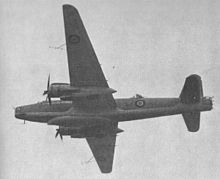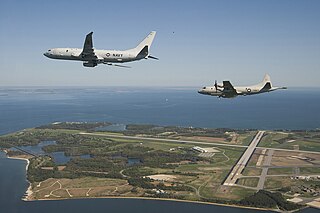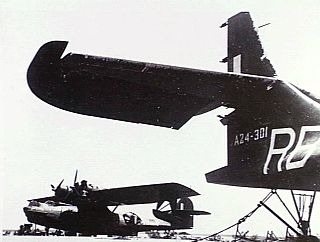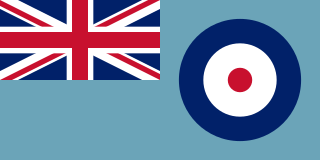
Dumbo was the code name used by the United States Navy during the 1940s and 1950s to signify search and rescue missions, conducted in conjunction with military operations, by long-range aircraft flying over the ocean. The purpose of Dumbo missions was to rescue downed American aviators as well as seamen in distress. Dumbo aircraft were originally land-based heavy bomber aircraft converted to carry an airborne lifeboat to be dropped in the water near survivors. The name "Dumbo" came from Walt Disney's flying elephant, the main character of the animated film Dumbo , appearing in October 1941. [1]

The United States Navy (USN) is the naval warfare service branch of the United States Armed Forces and one of the seven uniformed services of the United States. It is the largest and most capable navy in the world and it has been estimated that in terms of tonnage of its active battle fleet alone, it is larger than the next 13 navies combined, which includes 11 U.S. allies or partner nations. with the highest combined battle fleet tonnage and the world's largest aircraft carrier fleet, with eleven in service, and two new carriers under construction. With 319,421 personnel on active duty and 99,616 in the Ready Reserve, the Navy is the third largest of the service branches. It has 282 deployable combat vessels and more than 3,700 operational aircraft as of March 2018, making it the second largest and second most powerful air force in the world.

Search and rescue (SAR) is the search for and provision of aid to people who are in distress or imminent danger. The general field of search and rescue includes many specialty sub-fields, typically determined by the type of terrain the search is conducted over. These include mountain rescue; ground search and rescue, including the use of search and rescue dogs; urban search and rescue in cities; combat search and rescue on the battlefield and air-sea rescue over water.
The maximal total range is the maximum distance an aircraft can fly between takeoff and landing, as limited by fuel capacity in powered aircraft, or cross-country speed and environmental conditions in unpowered aircraft. The range can be seen as the cross-country ground speed multiplied by the maximum time in the air. The fuel time limit for powered aircraft is fixed by the fuel load and rate of consumption. When all fuel is consumed, the engines stop and the aircraft will lose its propulsion.
Contents
By extension, "Dumbo" became the unofficial nickname for any air-sea rescue aircraft, including flying boats [2] that had less need to drop heavy lifeboats since the aircraft could land on the water and perform rescues directly. [3] "Dumbo" was also an unofficial nickname for any variant of the PBY Catalina patrol bomber which operated in a wide variety of roles including anti-submarine warfare against German U-boats in the Battle of the Atlantic. [4]

Air-sea rescue is the coordinated search and rescue (SAR) of the survivors of emergency water landings as well as people who have survived the loss of their seagoing vessel. ASR can involve a wide variety of resources including seaplanes, helicopters, submarines, rescue boats and ships. Specialized equipment and techniques have been developed. Military and civilian units can perform air-sea rescue.
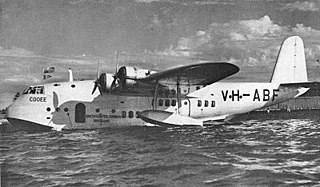
A flying boat is a fixed-winged seaplane with a hull, allowing it to land on water, that usually has no type of landing gear to allow operation on land. It differs from a floatplane as it uses a purpose-designed fuselage which can float, granting the aircraft buoyancy. Flying boats may be stabilized by under-wing floats or by wing-like projections from the fuselage. Flying boats were some of the largest aircraft of the first half of the 20th century, exceeded in size only by bombers developed during World War II. Their advantage lay in using water instead of expensive land-based runways, making them the basis for international airlines in the interwar period. They were also commonly used for maritime patrol and air-sea rescue.

The Consolidated PBY Catalina, also known as the Canso in Canadian service, is an American flying boat, and later an amphibious aircraft of the 1930s and 1940s produced by Consolidated Aircraft. It was one of the most widely used seaplanes of World War II. Catalinas served with every branch of the United States Armed Forces and in the air forces and navies of many other nations.
After the 1950s with development and greatly increased use of helicopters for air-sea rescue operations, the Dumbo aircraft were retired and the term was no longer used.

A helicopter is a type of rotorcraft in which lift and thrust are supplied by rotors. This allows the helicopter to take off and land vertically, to hover, and to fly forward, backward, and laterally. These attributes allow helicopters to be used in congested or isolated areas where fixed-wing aircraft and many forms of VTOL aircraft cannot perform.




